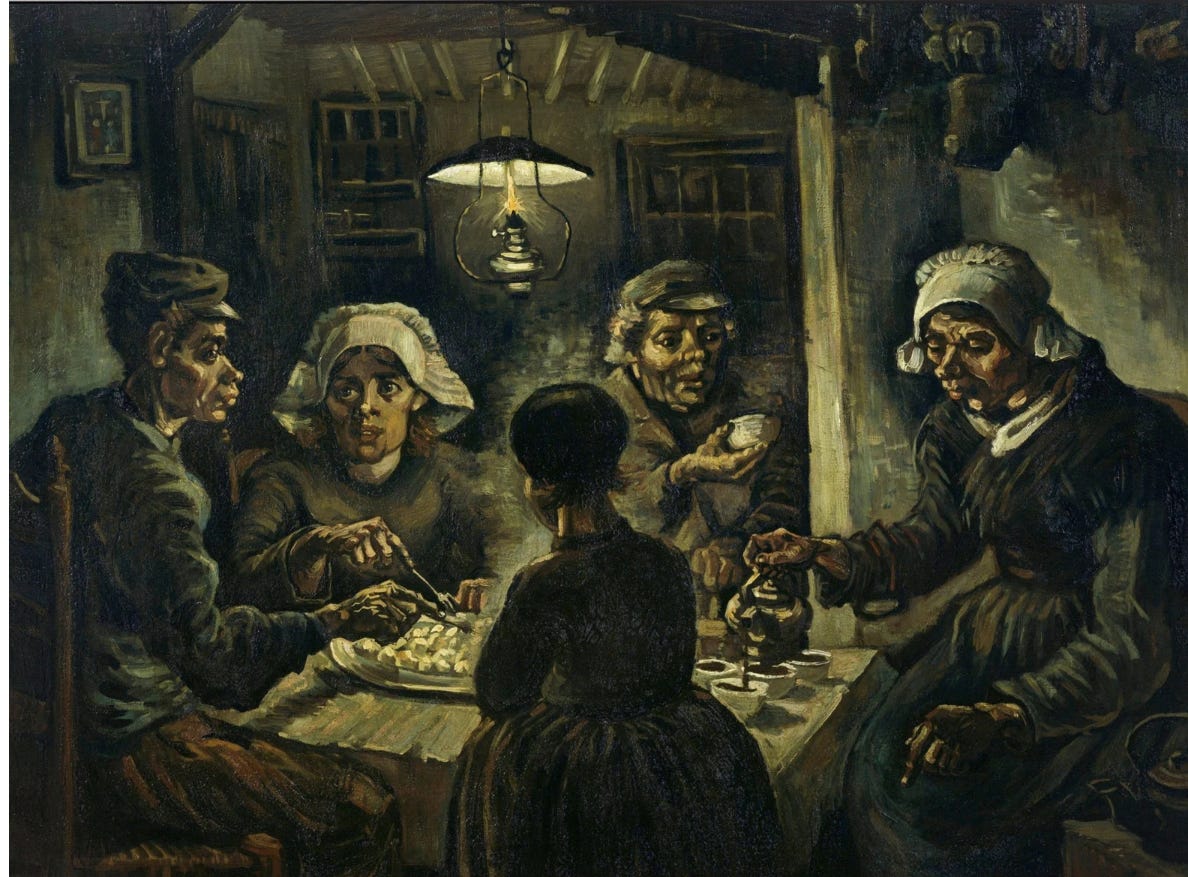The subject of food has certainly given you an appetite for creativity. Sweets, stews, cake and recipes lost and found, have so far featured high on the list of your favourite associations.
Food and recipes often feature in novels – Joanna Harris, Patricia Cornwell even Tolkien have used food to give a sense of domestic security in their stories. In class, we've mostly discussed pleasant food associations but food, and the lack of it can also symbolise oppression and control
The portrayal of food in art has evolved significantly over the centuries, reflecting cultural, social, and artistic trends:
Ancient Art: Food appeared in murals, carvings, and pottery, often symbolizing abundance, rituals, or offerings to gods. For example, ancient Egyptian tomb paintings depicted banquets and food items to accompany the deceased in the afterlife.
Medieval Period: Art often emphasized religious themes. Food was portrayed in the context of biblical stories or morality lessons, such as "The Last Supper" scenes.
Renaissance: Artists embraced realism and the beauty of everyday life. Elaborate still-life paintings emerged, showcasing luxurious feasts or symbolic arrangements of food, representing wealth, mortality, or the transience of life.
Dutch Golden Age: Still-life paintings became highly detailed and symbolic. Simple items like bread or fruit often reflected humility or the fleeting nature of material pleasures (Memento Mori).
Modern Era: With movements like Pop Art, food became a cultural icon. Think of Andy Warhol's Campbell's soup cans, which blurred the lines between commercialism and art.
Contemporary Art: Food is now often explored through multimedia, performance art, or installations. It's a medium to comment on sustainability, culture, or social issues. For example, artists like Marina Abramović have incorporated food into thought-provoking pieces.
In essence, food in art has transitioned from practical depictions and religious symbolism to bold statements about society, culture, and identity.
Which era’s portrayal resonates most with you?



